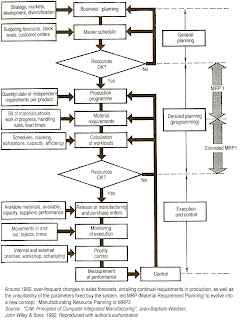Numetrics Management Systems, Inc., the semiconductor industry’s leading supplier of schedule predictability, today announced NMX-ERP™ 3.0, its next generation suite of enterprise resource planning (ERP) software for integrated circuit (IC) development organizations. The new software significantly extends the company’s top-down project planning and risk measurement capabilities, handling chips designed in nodes down to 45 nm. Numetrics’ approach to project planning and risk measurement is unique in the industry and gives a powerful boost to the customer’s revenue, profits and market share. Projects finish on-time, within budget and with competitive cycle times, which is why six of the top ten semiconductor companies use Numetrics’ ERP software.
Packed with dozens of new features, this next generation release of NMX-ERP incorporates a new rich-client graphical user interface, a new project plan synthesis engine, an XML interface to integrate with other enterprise tools, and Numetrics’ eighth generation IC (Integrated Circuit) design complexity calculation engine.
“The semiconductor industry misses product development 89% of the time, and when they miss, they miss big, with the average chip design taking six to nine months longer than anticipated,” said Ron Collett, Numetrics’ president and CEO. “The cost to cost to semiconductor companies is staggering, and increasing design complexity threatens to make the problem worse. NMX-ERP 3.0 is a culmination of nearly two years of effort by our development organization and a significant leap forward for our customers. Our solution is truly unique because it is the only one that accurately measures IC development schedule risk and exposes overly risky project plans by benchmarking their underlying assumptions against industry norms and past performance.”
NMX-ERP Release 3.0 includes a range of new features including the following:
1) Complexity Calculation Engine: Eighth generation of Numetrics’ patented complexity calculation engine leverages in-depth data mining of past generations of process technology nodes to establish a quantitative relationship between process node maturity and chip design complexity. The engine is calibrated on Numetrics’ full industry database of 1200 IC projects and support design styles including SoC, analog and mixed-signal, RF, ASICs, ASSPs, and advanced processors.
2) Project Plan Synthesis. New project plan synthesis engine generates estimates of duration and staffing required in each major phase of the IC development cycle. Users can perform “what-if” simulation on each phase, modulating either the duration or staffing to see the impact on the other.
3) XML-interface: NMX-ERP 3.0 now offers enterprise-wide integration options for collecting, reporting, and archiving customers’ valuable project data. With the newly released XML schema, customers are able to rapidly exchange data between NMX-ERP 3.0 and their internal systems.
4) New GUI: New Java-based, rich-client, graphical user interface further enhances the usability of Numetrics tools. Dozens of new features were added in this release to allow users to customize reporting and viewing of the data.
Pricing typically ranges from $35,000 to $95,000 per IC project, depending on the project’s complexity and size. NMX-ERP 3.0 is delivered as Software as a Service (SaaS), or for users who prefer a pure turnkey engagement, Numetrics also offers professional services
About Numetrics Management Systems, Inc.
Numetrics provides a unique suite of enterprise resource planning (ERP) software to semiconductor companies that enables unprecedented predictability of development schedules, reliably measures project schedule risk, and benchmarks development performance against the industry’s best-in-class. In use by six of the top ten semiconductor companies, the solution leverages Numetrics’ patented IC design complexity calculation engine, which is calibrated with statistical data from more than 1,200 benchmarked chip projects compiled from nearly 40 semiconductor companies. The Numetrics’ NMX-ERP™ solution enables superior project schedule estimation, risk analysis, resource planning, execution pipeline analysis and benchmarking. The company is headquartered at Cupertino, CA.
Source : Business Wire
